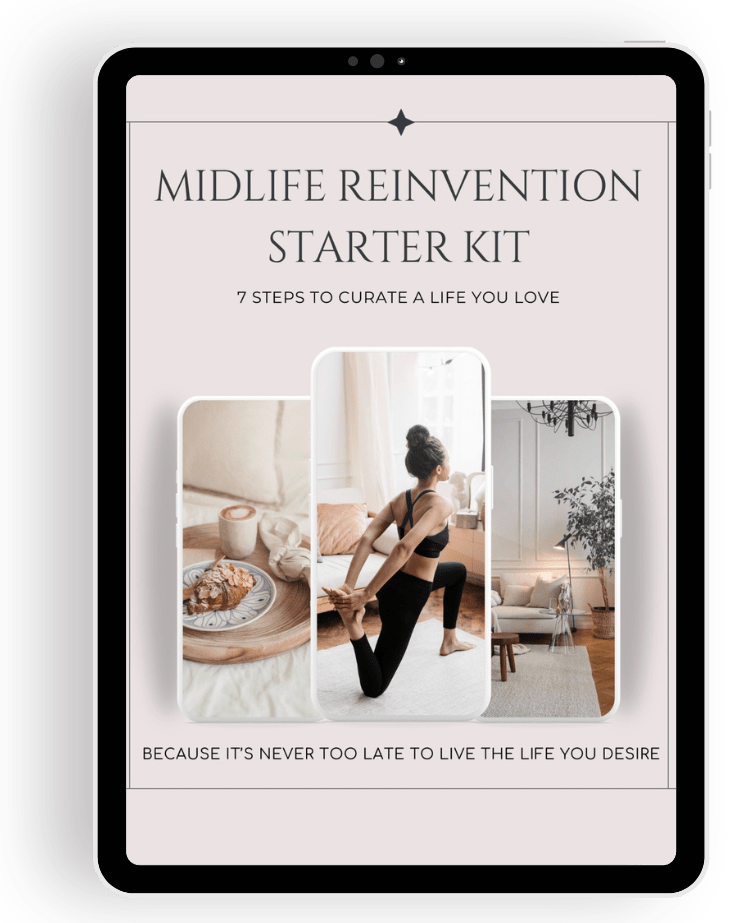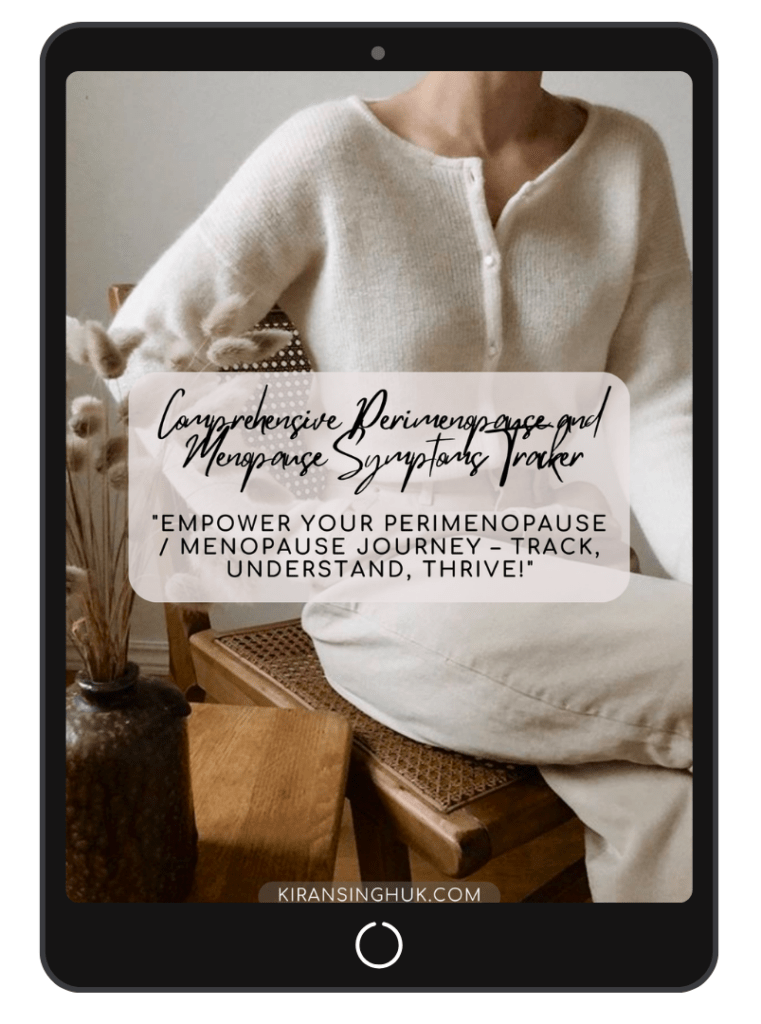What you eat directly impacts your hormones, energy levels, and overall well-being. In midlife, nourishing your body with the right foods can help stabilise blood sugar, reduce inflammation, and ease symptoms of hormonal imbalance like fatigue, brain fog, and mood swings.
The key is nutrient-dense, whole foods that naturally support your endocrine system. In today’s post, we’ll explore the best foods for hormonal balance, why they work, and simple ways to add them to your meals.

The Connection Between Food & Hormonal Health
Your hormones act as chemical messengers, influencing everything from metabolism and energy to mood and digestion. If your diet is filled with ultra-processed foods, refined sugar, and inflammatory oils, your hormones can become out of sync, leading to energy crashes, weight gain, and persistent fatigue.
On the flip side, eating whole, nourishing foods can:
- ✅ Stabilise blood sugar (reducing energy crashes)
- ✅ Support the liver in detoxifying excess hormones
- ✅ Reduce inflammation (easing joint pain & bloating)
- ✅ Improve sleep and mood balance
- ✅ Boost metabolism and digestion
Let’s look at the best foods to fuel your body and bring your hormones back into balance.

Top 10 Foods for Hormonal Balance & Energy
🥑 1. Avocados
Rich in healthy fats and fibre, avocados help stabilise blood sugar and support progesterone production, which is essential for mood and sleep.
➡ Try this: Add sliced avocado to salads, toast, or blend into a smoothie for a creamy texture.
🥦 2. Cruciferous Vegetables (Broccoli, Kale, Cauliflower, Cabbage)
These veggies contain indole-3-carbinol, which helps the liver break down excess oestrogen, reducing bloating and mood swings.
➡ Try this: Roast broccoli with olive oil, or add kale to soups and stir-fries.
🐟 3. Fatty Fish (Salmon, Mackerel, Sardines)
Packed with omega-3 fatty acids, these fish support brain function, reduce inflammation, and stabilise cortisol (your stress hormone).
➡ Try this: Have grilled salmon for dinner or add sardines to a salad for an energy boost.
🥚 4. Eggs
Eggs contain choline, a key nutrient for brain function and metabolism. They also provide protein and healthy fats to keep you full and energised.
➡ Try this: Make a veggie omelette or boiled eggs as a snack.
🥜 5. Nuts & Seeds (Flaxseeds, Pumpkin Seeds, Almonds, Walnuts)
Flaxseeds contain lignans that support oestrogen balance, while pumpkin seeds are rich in magnesium, which helps regulate stress and sleep.
➡ Try this: Sprinkle flaxseeds over porridge or add a handful of almonds to your afternoon snack.
🍠 6. Sweet Potatoes
A great source of slow-digesting carbohydrates, sweet potatoes keep blood sugar stable and prevent energy crashes.
➡ Try this: Bake sweet potato wedges or mash them for a comforting side dish.
🫘 7. Legumes (Chickpeas, Lentils, Black Beans)
Rich in fibre and plant-based protein, legumes help keep digestion smooth and blood sugar balanced.
➡ Try this: Make a chickpea salad or add lentils to soups.
🍫 8. Dark Chocolate (85%+ Cocoa)
High in magnesium, dark chocolate helps relax muscles, improve mood, and ease PMS symptoms.
➡ Try this: Enjoy a square of dark chocolate with a cup of herbal tea.
☕ 9. Green Tea
Contains L-theanine, an amino acid that reduces stress while boosting focus and energy without the jittery effect of coffee.
➡ Try this: Swap one coffee a day for green tea to support adrenal health.
🥑 10. Olive Oil
A powerhouse for reducing inflammation, olive oil helps protect your heart, brain, and hormones.
➡ Try this: Use extra virgin olive oil as your go-to cooking oil or drizzle over salads.

Journaling Prompts for Self-Reflection
- 🖊 What foods do I eat regularly that may be affecting my hormones?
- 🖊 How do I feel after eating different meals? Energised or sluggish?
- 🖊 What small change can I make to nourish my body this week?
- 🖊 How can I make meal prep easier to stay consistent?
Actionable Steps to Start Balancing Your Hormones with Food
- 🥗 Step 1: Upgrade One Meal – Choose one meal per day to be hormone-friendly (e.g., swap cereal for eggs & avocado).
- 🥜 Step 2: Add More Healthy Fats – Include nuts, seeds, avocado, and olive oil in your daily diet.
- 💧 Step 3: Stay Hydrated – Drink 2 litres of water daily, adding lemon for a gentle detox.
- 🥬 Step 4: Eat More Fibre – Aim for 30g of fibre daily from veggies, legumes, and whole grains.
- 🍵 Step 5: Reduce Caffeine & Sugar – Swap coffee for green tea and processed snacks for dark chocolate & nuts.

Final Thoughts
Your diet is one of the most powerful tools for balancing hormones and sustaining energy in midlife. By making small, intentional shifts, you’ll start to feel the difference – a better mood, steady energy, and fewer cravings.
💡 Want meal inspiration? Check out ‘Soulfully Nourished: Healthy Cooking & Eating Made Easy‘ with easy, delicious meals designed to support your hormones. Click here to grab your copy!
💬 Let’s Chat! What’s your biggest challenge when it comes to eating for hormonal balance? Drop a comment below or DM me on Instagram!
DISCLAIMER
I am not a health professional or medical practitioner. I am a certified Menopause Wellness Coach, and the information provided here is intended for educational and informational purposes only. It should not be taken as medical advice, diagnosis, or treatment. For any health-related concerns or queries, please consult your GP or a qualified healthcare provider. Always seek the advice of a medical professional before making any changes to your healthcare routine or starting new treatments.

Feel free to sign up to my Friday Morning Love Note HERE! This isn’t just a newsletter - it’s your invitation to pause, reflect, and realign with you. Every week, we’ll journey together to uncover the small, meaningful shifts that will help you design a life that feels uniquely and beautifully yours. Each week, I’ll deliver fresh intentions, uplifting tips, and simple shifts to inspire purposeful, creative living.





